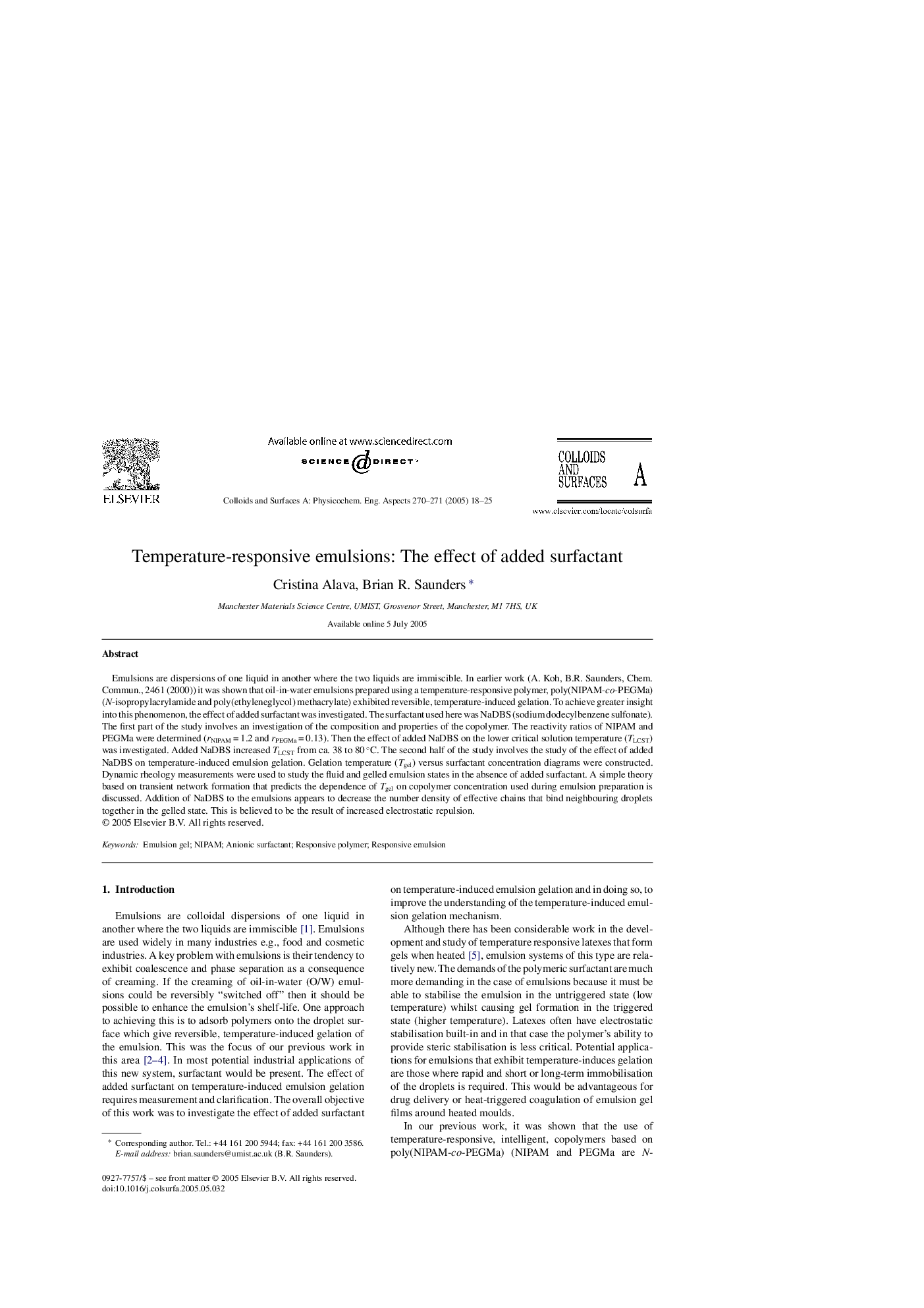| Article ID | Journal | Published Year | Pages | File Type |
|---|---|---|---|---|
| 9675516 | Colloids and Surfaces A: Physicochemical and Engineering Aspects | 2005 | 8 Pages |
Abstract
Emulsions are dispersions of one liquid in another where the two liquids are immiscible. In earlier work (A. Koh, B.R. Saunders, Chem. Commun., 2461 (2000)) it was shown that oil-in-water emulsions prepared using a temperature-responsive polymer, poly(NIPAM-co-PEGMa) (N-isopropylacrylamide and poly(ethyleneglycol) methacrylate) exhibited reversible, temperature-induced gelation. To achieve greater insight into this phenomenon, the effect of added surfactant was investigated. The surfactant used here was NaDBS (sodium dodecylbenzene sulfonate). The first part of the study involves an investigation of the composition and properties of the copolymer. The reactivity ratios of NIPAM and PEGMa were determined (rNIPAM = 1.2 and rPEGMa = 0.13). Then the effect of added NaDBS on the lower critical solution temperature (TLCST) was investigated. Added NaDBS increased TLCST from ca. 38 to 80 °C. The second half of the study involves the study of the effect of added NaDBS on temperature-induced emulsion gelation. Gelation temperature (Tgel) versus surfactant concentration diagrams were constructed. Dynamic rheology measurements were used to study the fluid and gelled emulsion states in the absence of added surfactant. A simple theory based on transient network formation that predicts the dependence of Tgel on copolymer concentration used during emulsion preparation is discussed. Addition of NaDBS to the emulsions appears to decrease the number density of effective chains that bind neighbouring droplets together in the gelled state. This is believed to be the result of increased electrostatic repulsion.
Related Topics
Physical Sciences and Engineering
Chemical Engineering
Colloid and Surface Chemistry
Authors
Cristina Alava, Brian R. Saunders,
